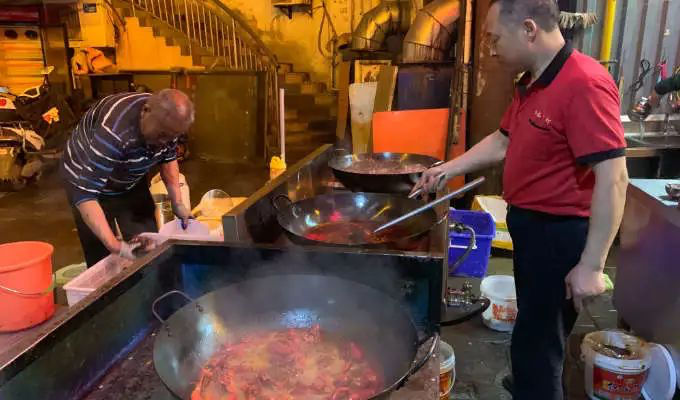Nanjing is hotting up, diners are flocking outside, the makeshift tables have been set up and the cases of beer have been chilled. The crayfish bonanza has begun. Yet, that which is now virtually a national obsession in fact originates here in Nanjing, from one of the darkest periods in the city’s history.
The crayfish in which so many delight is a close cousin to that famed in Louisiana, USA. Imported to Japan to use as feed for the South American bullfrog, the Japanese so too delighted in the crayfish for being low in fat, high in protein and easy to raise.
With the defeat of Japan in World War II, so the Japanese soldiers, and many civilians, departed Nanjing. Among the many logistical difficulties, what to do with all the crayfish which many Japanese liked to keep as pets?
No right-minded, crayfish-loving Japanese was about to leave their pet to starve. So instead, they plonked them into a lake near Nanjing’s former military airfield (then also the city’s civilian airport) close to Nanjing South Railway Station, where they could feed on both the living and dead organic matter therein.
Here they also multiplied. Fast forward to the 1980s; with living standards improving and people’s diets becoming more varied, so a multitude of crustaceans found their way to the dinner table. As the memory of the Nanjing Massacre was only half a century distant, the crayfish was not one of them.
Yet the Chinese are not about to let anything go to waste, especially economic opportunity, and so it came to be that the enterprising people of Xuyi, in west Jiangsu, saw fit to spend the next few decades turning their city into a crayfish industrial base.
Overall, China is now the world’s biggest exporter of crayfish, while the Chinese themselves chomp their way through more than 90 per cent of global crayfish consumption, according to the South China Morning Post.
This year, China will produce approximately 1 million tonnes of crayfish, meaning that the not altogether particularly attractive bottom feeder has become a monster of economic proportions. Last year, the city of Xuyi signed crayfish-related deals worth US$15 million. The less-than-humble beast has even become the city’s semi-official mascot.
Cute to some, perhaps, but to others, a health hazard.
In a 2016 report published by the National Center for Biotechnology Information and co-authored by Nanjing University’s School of Environment and the Nanjing State Key Laboratory of Pollution Control and Resource Reuse, it was noted that, while mean metal concentrations in crayfish samples surveyed from 12 provinces in China conformed to national safety standards, there are dangers for those who consume crayfish en masse, specifically that, “carcinogenic effects due to the presence of As [Arsenic] was above the acceptable level”.
More graphically, almost a decade ago, in 2010, scores of people in Nanjing contracted Haff disease after eating crayfish. The unfortunate and thankfully rare muscular condition, also known as rhabdomyolysis, can lead to acute renal failure.
For readers who are new to the city and still not put off, The Nanjinger reminds to not buy dead crayfish, eat them raw or their heads. Can’t finish them all? Do ask for a doggy bag even with no intention of eating them later; unscrupulous restaurants are known to sell leftovers on as new.









